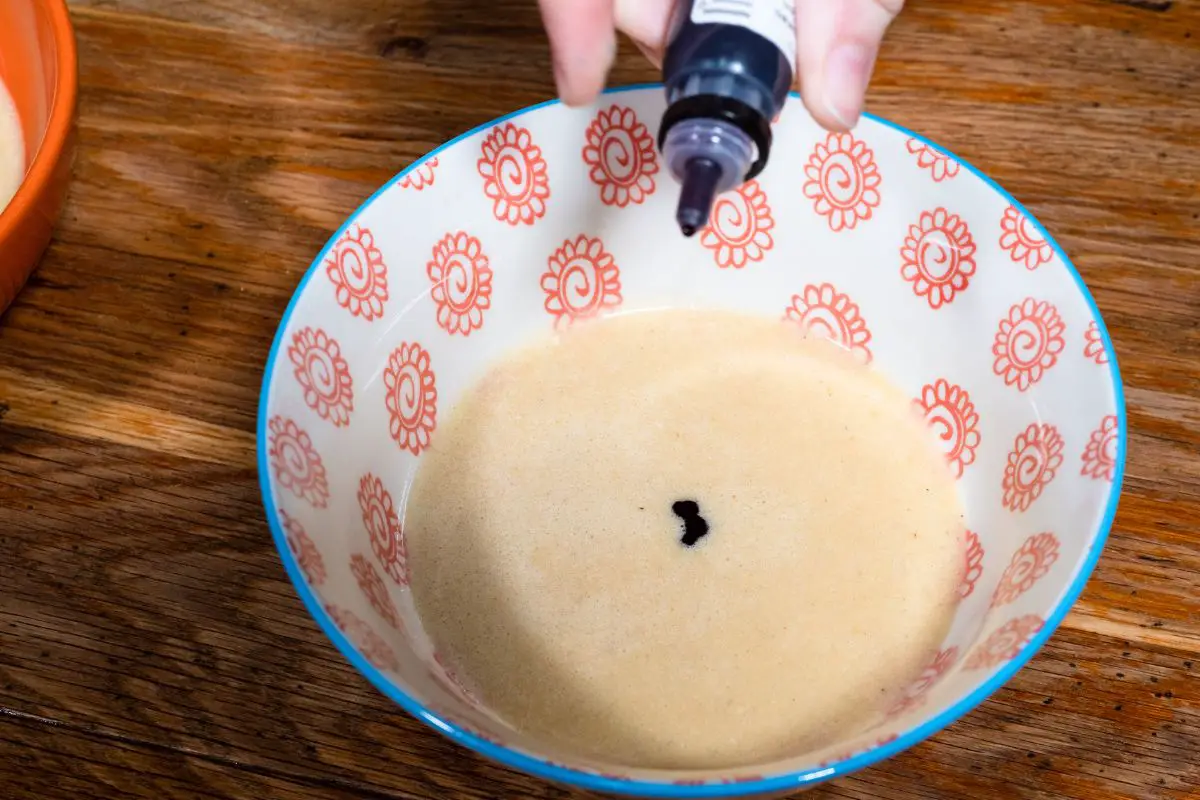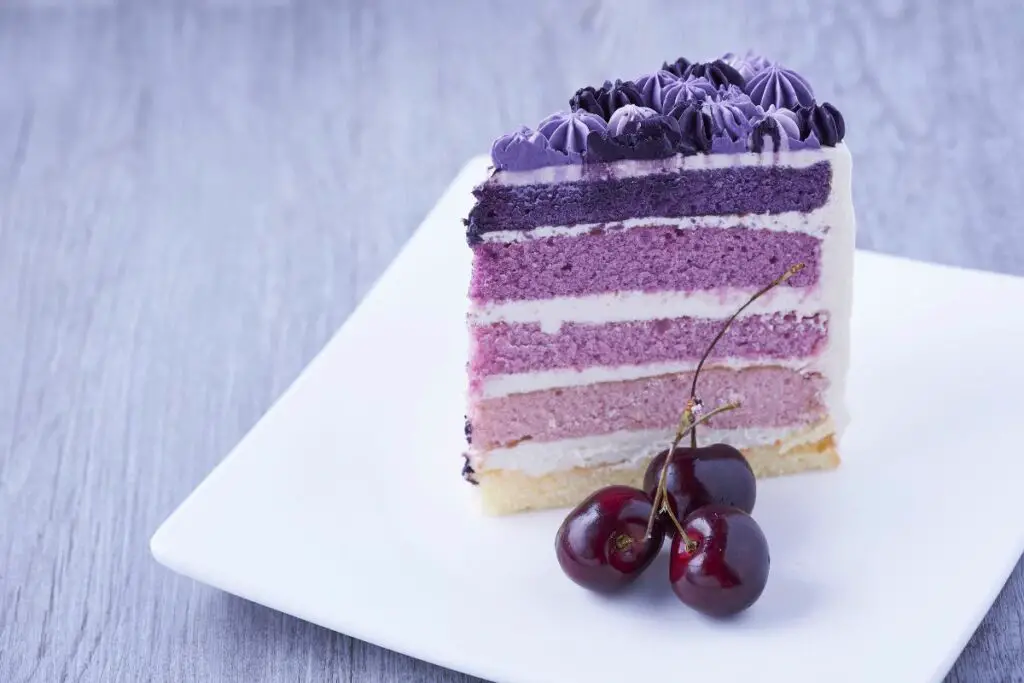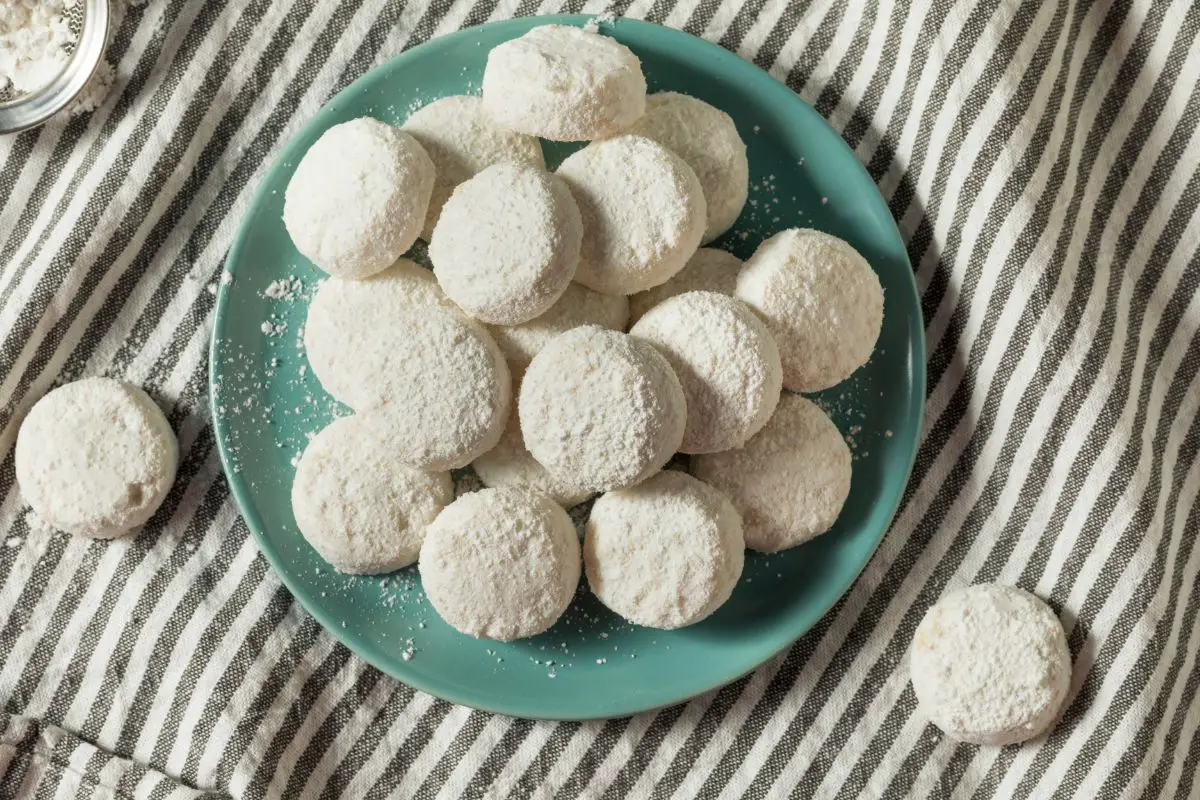Are you planning on making a vibrantly colored dessert, but you don’t have the right food coloring in stock? Well, look no further.
If you want to use a purple food coloring, you can easily make your own batch in the comfort of your own kitchen, using just a handful of ingredients.

Once you have tried it once, you will wonder why you ever bothered to buy premade purple coloring in the first place.
Here is how you can make purple food coloring at home.
2 Ways To Make Purple Food Coloring
There are two ways to make your own food coloring at home, and both of them are fairly easy to do.
Your first option is to mix together some red and blue food coloring, and the second option is to make your very own purple food coloring from scratch.
If you already have red and blue food coloring at home, the first option may be easiest for you to achieve.
If you have blueberries at home, however, you can easily make your very own homemade coloring within less than an hour.
Here is how you can make purple food coloring at home.
Using Red And Blue Food Coloring
The easiest way to make your own purple food coloring at home is to mix together some red and blue food coloring.
When combined, red and blue make purple. However, it won’t be as simple as adding equal amounts of each color into a bowl and giving it a stir.
Depending on the shade that you are aiming for, you will need to adjust the amount of each color that you will be using.
For a standard shade of violet – not too dark, not too light – we recommend using a ratio of 3/16; 3 parts blue, 16 parts red.
Red coloring is typically a lot lighter than blue coloring, so if you add too much blue, you will end up with a dark blue hue.
If you want the purple to be lighter and more vibrant, add a little more red. If you want it to be darker, add more blue. Adjust the color to fit your vision.
Using Blueberries (Or Other Purple Fruit/Veg)
If you want to make your very own homemade purple food coloring, you can make some at home with only a handful of ingredients.
We recommend using blueberries, although you could also use elderberries or purple cabbage.
If you’re using blueberries, you will need to blend them up, or run them through a food processor. Add a little water into the mix, and blend until the mixture is completely smooth.
This method also works when using elderberries. If you want to use purple cabbage, though, you will need to boil it until the water becomes purple.
Once you have the liquid from either method, store it in an airtight container, allow it to cool, and then store it in a cool area for up to 6 weeks. You can now use this liquid as a purple food coloring.
How To Achieve The Perfect Shade Of Purple In Food Coloring

It is one thing knowing how to make purple food coloring, but it is another thing trying to create the exact shade that you are aiming for.
Every color has hundreds of different shades. For example, if someone says that green is their favorite color, you may find yourself wondering if they prefer a vibrant lime hue, or a subtle shade of teal.
The same goes for purple. There are so many shades to choose from, including lighter shades like lilac and periwinkle, and darker shades like indigo and plum.
Below, we have listed how to create lighter shades of purple, darker shades of purple, and even a typical, run-of-the-mill shade of purple.
Creating A Typical Shade Of Purple
Our recommended method for making a ‘normal’ shade of purple, while using store bought coloring, is to use a ratio of 16:3 of red and blue coloring.
If you add more blue food coloring into this mixture, the overall color will immediately darken, and you will need to add more red to build the shade of purple back up.
As we mentioned earlier, blue is a very strong color, and will immediately overpower the red coloring.
Creating A Light Shade Of Purple
Creating a light purple food coloring can be quite difficult to do, since this would require you adding a white food coloring into the mix.
You can purchase white gel coloring, but you would have to use a lot of it to significantly lighten the color.
If you are using a natural, homemade purple food coloring, you could try diluting the product with more water.
Ultimately, your best bet would be to use a tiny amount of purple food coloring when cooking with a light colored batter.
You could also try using a pink food coloring instead of red, as this will make the purple appear more vibrant.
Creating A Deep Shade Of Purple
To create a deeper shade of purple using store bought food coloring, you will need to add a couple more drops of blue coloring into your mixture.
As we mentioned earlier, you will want to be very careful not to add too much blue, as this will overwhelm the mixture, and turn it into a dark shade of blue.
The amount of blue that you use will still need to be significantly less than the amount of red that you use.
We recommend adding just three more drops of blue, making a 13:3 ratio of red and blue.
These three additional drops of blue will make all the difference, creating a darker shade of blue, or an indigo.
Final Thoughts
As long as you have red and blue food coloring, water, blueberries, and/or purple cabbage at home, you can easily create your very own homemade purple food coloring.
Just be wary that you should always add more drops of red food coloring than blue if you are going to be using store bought food coloring to create purple.
Blue is a lot darker than red; therefore, you will need to use it sparingly.
Happy mixing!
- How To Make Honey Butter - July 4, 2023
- How To Make Meringue - July 3, 2023
- What Is Shortening? - July 3, 2023








